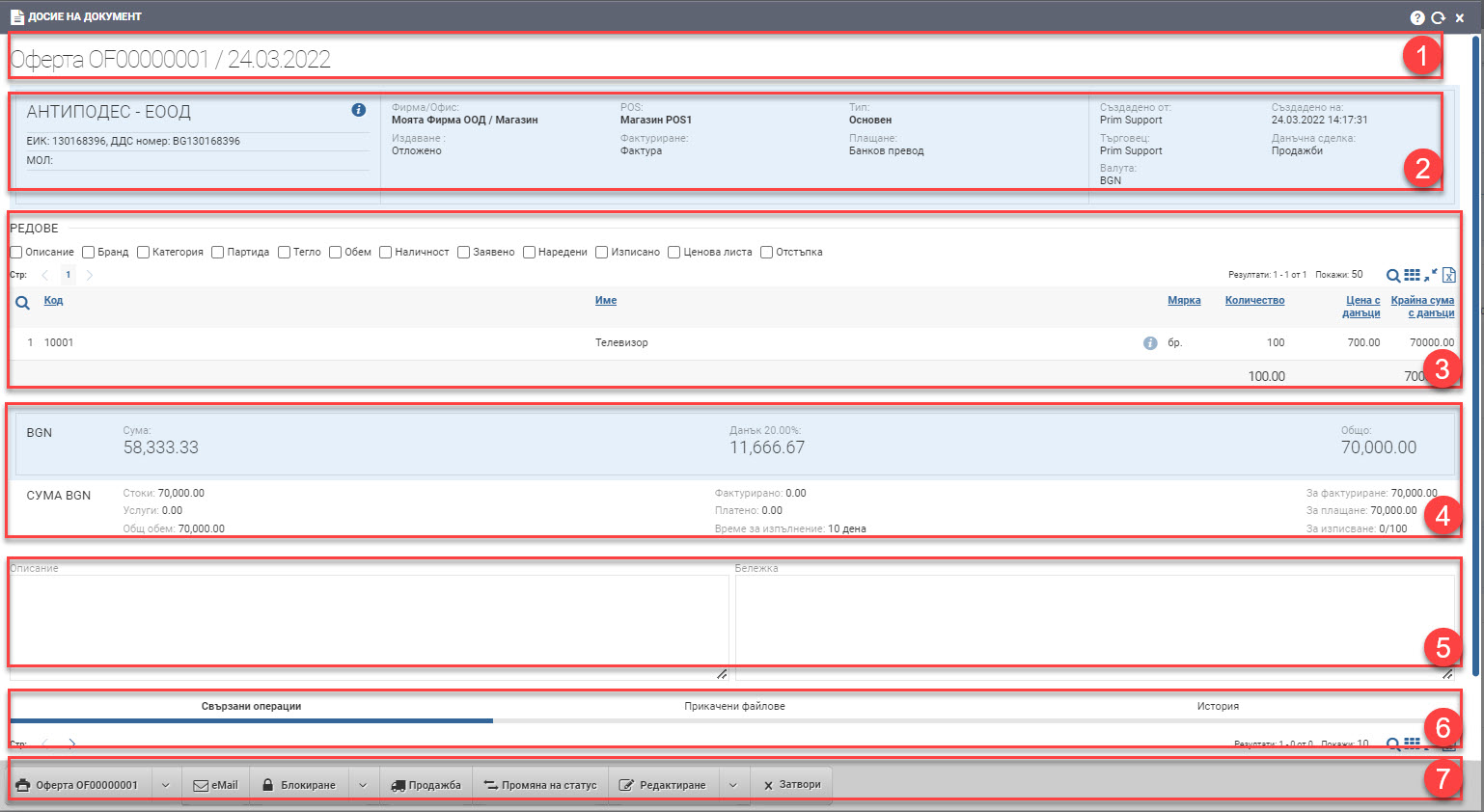The sale file gives you information about the sale itself. The screen is divided into several sections: Header (1), Conditions (2), Lines (3), Value (4), Description and Comment (5), Additional Tabs (6) and Buttons (7):

Header (1)
The header (1) shows the document number, status and date.
Conditions (2)
In Conditions (2) you see the basic information about the document:
- counterparty to the document.
- the company issuing the document.
- terms of the document.
- details of the document such as the user, issuing the document, currency, date and time of issue, etc.
Lines (3)
Next are the Lines (3) in the document that give information about the items/services in it:
| Column | Description |
| Code | Item/service code. |
| Name | Name of the item/service. |
| Info button | Opens an item/service file. |
| Quantity | Quantity of the item/service in the document. |
| Price with taxes | Unit price of the item/service with taxes. |
| Final amount with taxes | Total price of the item/service – quantity*price including taxes. |
You can add additional columns to the basic row information by inserting checkers:
| Column | Description |
| Description | Description of item/service. |
| Brand | Brand of the item/service. |
| Category | Category of item/service. |
| Batch | Lot of the item, if any. |
| Weight | Item weight. |
| Volume | Item volume. |
| Availability | Quantity of items in the warehouse to the POS. |
| Retrieved from | The quantity of items requested for replenishment. |
| Ordered | Quantity for warehouse dispatch. |
| Retrieved from | What quantity has been discharged from the warehouse. |
| Price list | The price list of the order. |
| Discount | Displays two columns – for quantity and for percentage. This is the discount made for the corresponding line of the document. |
Value (4)
The fields show information about the value of the offer- amount without VAT, value of VAT, total amount.
Description and Note (5)
Following are two fields for a description and a note to the offer. In the Description field, the reason for the transaction is usually entered in free text. The description is displayed on the printed form. The description you have already filled in is loaded into the interface, if any.
The note is not displayed on the printed form, but is rather for internal use. Your interface will load the note you have already completed, if any.
Additional tabs (6)
In the Additional tabs section (6) you can see:
| Tab | Description |
| Related operations | Displays related transactions such as sales, invoices, etc. |
| Attachments | Displays the attachments to the document. |
| History | Shows the history of the document – whether it has been edited, deleted, etc. |
Buttons (7)
At the bottom you see buttons for:
| Button | Description |
| Pruning | Printing the documents related to the offer. |
| Sending the offer by mail (remains in document history). | |
| Blocking | Block items in the warehouse. |
| For Sale | Changes the status of the offer and converts it to a sale. |
| Edit by |
|
| Change of status | Opens an interface to change the status of the offer. |
| Close | You close the file |